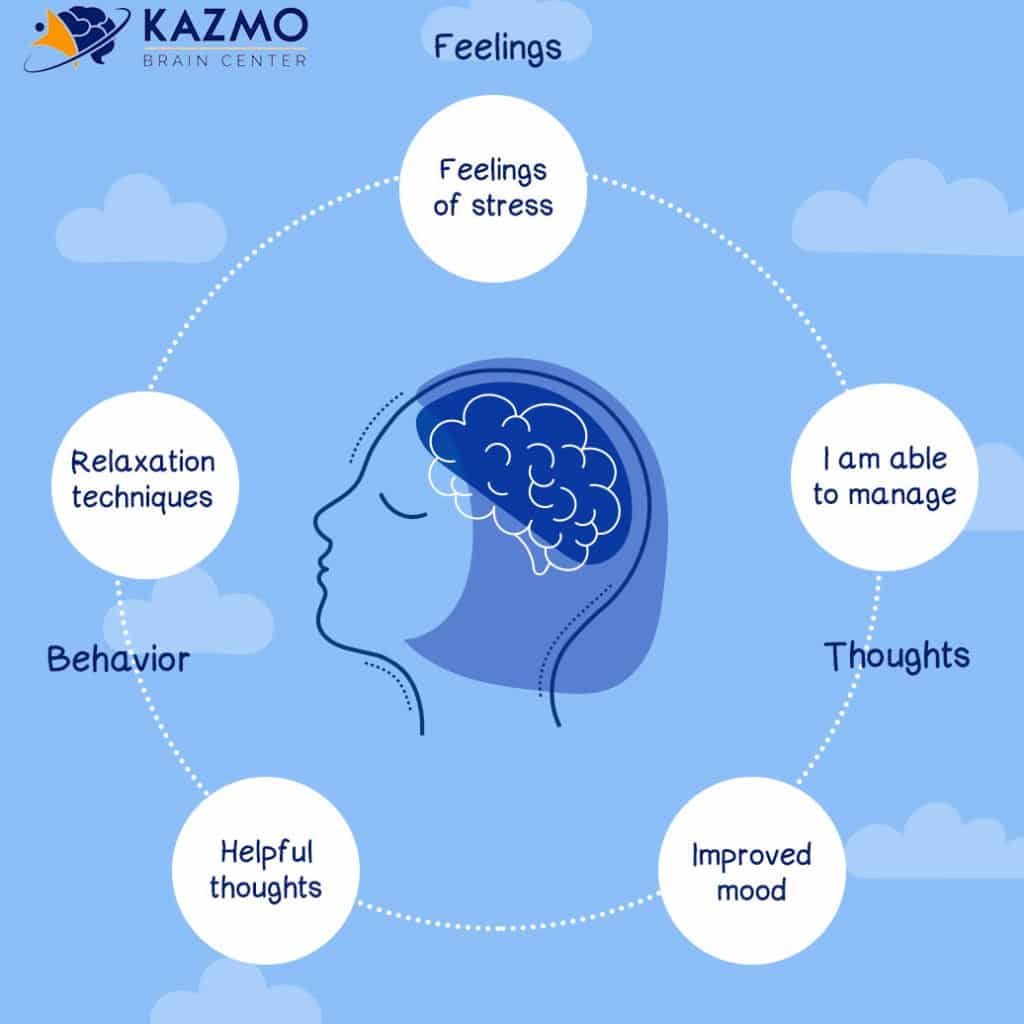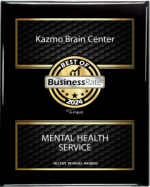What is Cognitive Behavioral Therapy (CBT)?
Cognitive behavioral therapy (CBT) is a type of talking treatment that focuses on how your thoughts, beliefs, and attitudes affect your feelings and behavior and teaches you coping skills for dealing with different problems.
If your negative interpretation of situations goes unchallenged, then these patterns in your thoughts, feelings, and behavior can become part of a continuous cycle.
It’s most commonly used to treat anxiety and depression, but can be useful for other mental and physical health problems.
Types of Cognitive Behavioral Therapy:
CBT encompasses a range of techniques and approaches that address thoughts, emotions, and behaviors. These can range from structured psychotherapies to self-help materials. Several specific types of therapeutic approaches involve CBT:
- Cognitive Therapy centers on identifying and changing inaccurate or distorted thinking patterns, emotional responses, and behavior.
- Dialectical Behavior Therapy (DBT) addresses thoughts and behaviors while incorporating strategies such as emotional regulation and mindfulness.
- Multimodal Therapy suggests that psychological issues must be treated by addressing seven different but interconnected modalities, which are behavior, affect, sensation, imagery, cognition, interpersonal factors, and drug/biological considerations.
- Rational Emotive Behavior Therapy (REBT) involves identifying irrational beliefs, actively challenging these beliefs, and finally learning to recognize and change these thought patterns.
While each type of cognitive behavioral therapy takes a different approach, all work to address the underlying thought patterns that contribute to psychological distress.
How CBT Works?
CBT is based on the concept that your thoughts, feelings, physical sensations and actions are interconnected, and that negative thoughts and feelings can trap you in a vicious cycle.
In CBT you work with a therapist to identify and challenge any negative thinking patterns and behavior which may be causing you difficulties. In turn, this can change the way you feel about situations, and enable you to change your behavior in the future.
You and your therapist might focus on what is going on in your life right now, but you might also look at your past, and think about how your past experiences impact the way you see the world.
“CBT is learning to stop the cycle of negative thinking. I still have relapses now and it is the one tool that I use to get me out of the truly dark spots.”
Uses for CBT:
CBT is an effective way of treating many different mental health conditions.
In addition to depression or anxiety disorders, CBT can also help people with:
- Bipolar disorder
- Borderline personality disorder
- Eating disorders – such as anorexia and bulimia.
- Obsessive compulsive disorder (OCD).
- Panic disorder
- Phobias
- Post-traumatic stress disorder (PTSD)
- Psychosis
- Schizophrenia
- Sleep problems – such as insomnia
- Problems related to alcohol misuse
CBT is also sometimes used to treat people with long-term health conditions, such as:
- Irritable bowel syndrome (IBS)
- Chronic fatigue syndrome (CFS)
- Fibromyalgia
Although CBT cannot cure the physical symptoms of these conditions, it can help people cope better with their symptoms.
CBT Strategies:
People often experience thoughts or feelings that reinforce or compound faulty beliefs. Such beliefs can result in problematic behaviors that can affect numerous life areas, including family, romantic relationships, work, and academics.
Identify Negative Thoughts
It is important to learn how thoughts, feelings, and situations can contribute to maladaptive behaviors.
The process can be difficult, especially for people who struggle with introspection, but it can ultimately lead to self-discovery and insights that are an essential part of the treatment process.
Practice New Skills
It is important to start practicing new skills that can then be put in to use in real-world situations. For example, a person with a substance use disorder might start practicing new coping skills and rehearsing ways to avoid or deal with social situations that could potentially trigger a relapse.
Set Goals
Goal setting can an important step in recovery from mental illness and helping you make changes to improve your health and life. During CBT, a therapist can help with goal-setting skills by teaching you how to identify your goal, distinguish between short- and long-term goals, set SMART (specific, measurable, attainable, relevant, time-based) goals and focus on the process as much as the end outcome.
Problem Solve
Learning problem solving skills can help you identify and solve problems that arise from life stressors, both big and small, and reduce the negative impact of psychological and physical illness. Problem solving in CBT often involves five steps: identifying a problem, generating a list of possible solutions, evaluating the strengths and weaknesses of each possible solution, choosing a solution to implement and implementing the solution.
Self Monitor
Also known as diary work, self-monitoring is an important part of CBT that involves tracking behaviors, symptoms or experiences over time and sharing them with your therapist. Self-monitoring can help provide your therapist with the information needed to provide the best treatment. For example, for eating disorders, self-monitoring may involve keeping track of eating habits as well as any thoughts or feelings that went along with consuming that meal or snack.
Progress Gradually
In most cases, CBT is a gradual process that helps a person take incremental steps towards a behavior change. For example, someone with social anxiety might start by simply imagining anxiety-provoking social situations. Next, they might start practicing conversations with friends, family and acquaintances.
By progressively working toward a larger goal, the process seems less daunting and the goals easier to achieve.
Potential Pitfalls during CBT
There are several challenges that people may run into during cognitive behavioral therapy.
Change Can Be Difficult
Initially, some patients suggest that while they recognize that certain thoughts are not rational or healthy, simply becoming aware of these thoughts does not make it easy to alter them.
CBT Is Very Structured
Cognitive behavioral therapy doesn’t tend to focus on underlying unconscious resistances to change as much as other approaches such as psychoanalytic psychotherapy. It is often best-suited for clients who are more comfortable with a structured and focused approach in which the therapist often takes an instructional role.
People Must Be Willing to Change
For cognitive behavioral therapy to be effective, the individual must be ready and willing to spend time and effort analyzing their thoughts and feelings. Such self-analysis and homework can be difficult, but it is a great way to learn more about how internal states impact outward behavior.
History of CBT
CBT emerged during the 1960s and originated in the work of psychiatrist Aaron Beck, who noted that certain types of thinking contributed to emotional problems. Beck labeled these “automatic negative thoughts” and developed the process of cognitive therapy.
Where earlier behavior therapies had focused almost exclusively on associations, reinforcements, and punishments to modify behavior, the cognitive approach addressed how thoughts and feelings affect behaviors.
Since then, CBT has emerged as an effective first-line treatment for a wide range of disorders and conditions.
Dr. Leza (Reza) Kazemi-Mohammadi, is the Kazmo Brain Center Director and Licensed Professional Counselor, and he uses CBT techniques. Request an Appointment at Kazmo Brain Center located in Frisco, Texas for more information about Cognitive Behavioral Therapy.
Resource:
verywellmind.com







